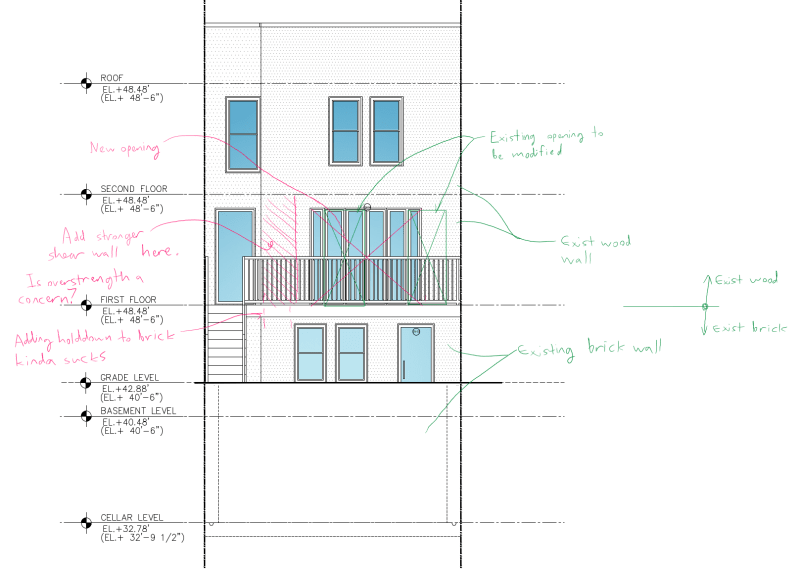milkshakelake
Structural
Client wants to make an opening in an existing rear wood wall. This wall is about 100 years old and definitely wasn't designed as a shear wall, but functionally, it's a shear wall. When it comes to ASCE 7 code, alterations/removals to shear walls will require shear walls added somewhere else.
I was thinking of replacing part of the existing wood stud wall with a new shear wall, or at least add sheathing on a second side. I'm concerned about:
1. Overstrength: does this make it a soft story?
2. Do I need to do anything with the shear wall above? Like between second floor and roof.
3. The proposed shear wall would be on top of a brick foundation wall. I'm concerned about how to connect a holddown to something like that. It's a bit silly because holddowns didn't exist when this building was made and lateral systems weren't really a thing for this type of building, and ASCE 7 would come out like 70 years later...but I still need to follow modern codes when doing this alteration.

I was thinking of replacing part of the existing wood stud wall with a new shear wall, or at least add sheathing on a second side. I'm concerned about:
1. Overstrength: does this make it a soft story?
2. Do I need to do anything with the shear wall above? Like between second floor and roof.
3. The proposed shear wall would be on top of a brick foundation wall. I'm concerned about how to connect a holddown to something like that. It's a bit silly because holddowns didn't exist when this building was made and lateral systems weren't really a thing for this type of building, and ASCE 7 would come out like 70 years later...but I still need to follow modern codes when doing this alteration.


![[upsidedown] [upsidedown] [upsidedown]](/data/assets/smilies/upsidedown.gif) .
.